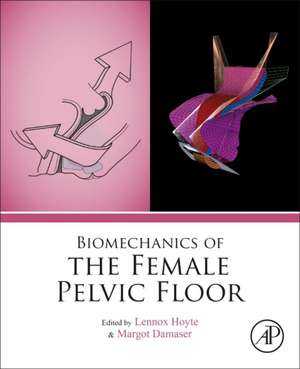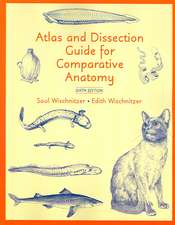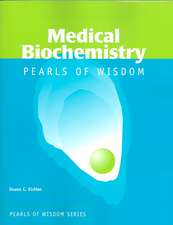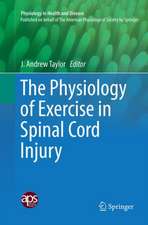Biomechanics of the Female Pelvic Floor
Editat de Lennox Hoyte, Margot Damaseren Limba Engleză Hardback – 30 mar 2016
The authors have combined their expertise to create a thorough, comprehensive view of female pelvic floor biomechanics in order to help different disciplines discuss, research, and drive solutions to pressing problems. The book includes a common language for the design, conduct, and reporting of research studies in female PFD, and will be of interest to biomechanical and prosthetic tissue engineers and clinicians interested in female pelvic floor dysfunction, including urologists, urogynecologists, maternal fetal medicine specialists, and physical therapists.
- Contains contributions from leading bioengineers and clinicians, and provides a cohesive multidisciplinary view of the field
- Covers causes, risk factors, and optimal treatment for pelvic floor biomechanics
- Combines anatomy, imaging, tissue characteristics, and computational modeling development in relation to pelvic floor biomechanics
Preț: 892.30 lei
Preț vechi: 1059.25 lei
-16% Nou
Puncte Express: 1338
Preț estimativ în valută:
170.76€ • 177.62$ • 140.97£
170.76€ • 177.62$ • 140.97£
Carte tipărită la comandă
Livrare economică 08-22 aprilie
Preluare comenzi: 021 569.72.76
Specificații
ISBN-13: 9780128032282
ISBN-10: 0128032286
Pagini: 468
Dimensiuni: 191 x 235 x 28 mm
Greutate: 1.16 kg
Editura: ELSEVIER SCIENCE
ISBN-10: 0128032286
Pagini: 468
Dimensiuni: 191 x 235 x 28 mm
Greutate: 1.16 kg
Editura: ELSEVIER SCIENCE
Public țintă
Biomechanical, prosthetic & tissue engineers interested in the female pelvic floor.Clinicians interested in female pelvic floor dysfunction – Urologists, urogynecologists, ob/gyn, Maternal fetal medicine specialists, physical therapists.
Cuprins
Section 1: Principles of Pelvic Floor Anatomy & Biomechanics
1. History of Biomechanics
2. Pelvic floor Anatomy and Pathology
3. Musculoskeletal PF anatomy
4. Introduction to Classical Mechanics
5. Biomechanical Characterization of Native Pelvic Floor Organs and Tissues
6. Biomechanical measurements in animal models
7. Biomechanics of pelvic floor prosthetic materials
Section 2: Influencers of Pelvic Floor Biomechanics
8. Biochemistry and Ultrastructure of pelvic floor tissues and organs
9. Impact of Genetics on pelvic floor biomechanics
10. Impact of Pregnancy/Childbirth on pelvic floor biomechanics
11. Biomechanical environment of the pelvic floor
12. Effect of Physical activity on the pelvic floor
Section 3: Imaging and Segmentation of Pelvic Floor
13. Ultrasound Imaging of the pelvic floor
14. MRI imaging of PF
15. Geometric representation of PF tissues
16. Image segmentation of pelvic floor (including super-resolution imaging methods)
17. Biomechanical Characterization of the Pelvic Floor using Tactile Imaging
Section 4: Biomechanical Modeling and Simulation of Pelvic Floor
18. Computational Tools for Pelvic Floor Biomechanical analysis
19. Applications of pelvic floor Modeling and Simulation
20. Building PF Simulations
21. Simulations of Female Pelvic Floor Dysfunction
22. Biomechanical Childbirth Simulations
Section 5: Conclusions
23. PF biomechanics - What have we learned, what can we learn?
24. Future work/directions
1. History of Biomechanics
2. Pelvic floor Anatomy and Pathology
3. Musculoskeletal PF anatomy
4. Introduction to Classical Mechanics
5. Biomechanical Characterization of Native Pelvic Floor Organs and Tissues
6. Biomechanical measurements in animal models
7. Biomechanics of pelvic floor prosthetic materials
Section 2: Influencers of Pelvic Floor Biomechanics
8. Biochemistry and Ultrastructure of pelvic floor tissues and organs
9. Impact of Genetics on pelvic floor biomechanics
10. Impact of Pregnancy/Childbirth on pelvic floor biomechanics
11. Biomechanical environment of the pelvic floor
12. Effect of Physical activity on the pelvic floor
Section 3: Imaging and Segmentation of Pelvic Floor
13. Ultrasound Imaging of the pelvic floor
14. MRI imaging of PF
15. Geometric representation of PF tissues
16. Image segmentation of pelvic floor (including super-resolution imaging methods)
17. Biomechanical Characterization of the Pelvic Floor using Tactile Imaging
Section 4: Biomechanical Modeling and Simulation of Pelvic Floor
18. Computational Tools for Pelvic Floor Biomechanical analysis
19. Applications of pelvic floor Modeling and Simulation
20. Building PF Simulations
21. Simulations of Female Pelvic Floor Dysfunction
22. Biomechanical Childbirth Simulations
Section 5: Conclusions
23. PF biomechanics - What have we learned, what can we learn?
24. Future work/directions
Recenzii
"The engineering concepts are clearly presented and the clinical applications are wide ranging and relevant. Overall, this would be a helpful addition for any female pelvic medicine and reconstructive surgery group or pelvic floor biomechanical research group. Score: 82 - 3 Stars." --Doody's



















